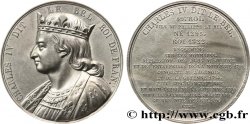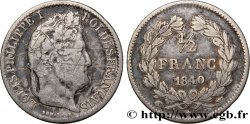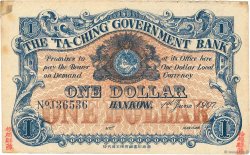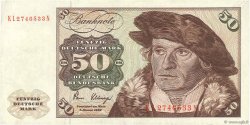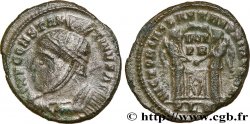E-auction 424-336375 - fme_412108 - LOUIS-PHILIPPE I Médaille, Hommage à Abraham Duquesne
Чтобы принять участие в торгах, вы должны войти в систему и стать подтвержденным участником аукциона. Войдите, чтобы сделать ставку. Ваш аккаунт будет подтвержден в течение 48 часов. Не ждите до закрытия торгов, чтобы зарегистрироваться.Сделав ставку на данный товар, вы вступаете в юридическое соглашение на покупку выбранного товара и нажатием кнопки «Сделать ставку» подтверждаете принятие вами условий интернет-аукционов cgb.fr.
Ставка может бить сделана только в полном эквиваленте евро. Торги закроются согласно времени, указанному в описании товара, все ставки, сделанные после закрытия торгов, учитываться не будут. Не следует откладывать предложение вашей ставки до последнего момента, так как система может не успеть обработать вашу заявку, и ваша ставка не будет принята. Более детальную информацию вы найдёте здесь: FAQ по интернет-аукционам.
БЕСПЛАТНО.
БЕСПЛАТНО.
| Оценить : | 150 € |
| Цена : | 55 € |
| Максимальная предлагаемая цена : | 55 € |
| Конец торгов : | 31 May 2021 18:39:30 |
| Участников : | 6 Участников |
Тип Médaille, Hommage à Abraham Duquesne
Дата: 1844
Монетный двор / Город: 76 - Dieppe
Металл: bronze
Диаметр: 56 mm
Ориентация осей монеты: 12 h.
Гравер DEPAULIS Alexis-Joseph (1790-1867)
Вес: 92 g.
Век: lisse + proue BRONZE
Комментарии о состоянии
Superbe médaille avec malheureusement une oxydation frottée au-dessus de la tête au droit
Лицевая сторона
Аверс: легенда: LOUIS PHILIPPE I - ROI DES FRANÇAIS.
Аверс: описание: Tête laurée de Louis Philippe à droite.
Обратная сторона
Реверс: легенда: A / DUQUESNE / LA / VILLE DE DIEPPE / MDCCCXLIV.
Реверс: Описание: Légende horizontale en 5 lignes.
Комментарий
Médaille avec un assez rare poinçon Proue (utilisé entre 1842 et 1945), signée DEPAULIS F.
Abraham Duquesne naît en 1610 à Dieppe (Seine-Maritime) dans une famille huguenote d’armateurs, de corsaires et de marchands. Il est le fils d'Abraham Duquesne (v. 1570-1635), capitaine de vaisseau, calviniste et de son épouse, Marthe de Caux, tous deux originaires de Normandie. Né Roturier, il fut anobli par les titres de baron d'Indret en 1650 et marquis du Quesne en 1682.
Dès son plus jeune âge il suit les pas de son père. Il passe son enfance à Dieppe, qui possède alors la plus grande école d'hydrographie française.
En 1627, à l'âge de dix-sept ans, il entre dans la marine royale et sert à bord du Petit Saint-André, comme lieutenant de son père. Son père tombé malade, il le remplace et capture un navire marchand hollandais, le Berger, qu'il ramène à Dieppe et qui lui est adjugé par le Parlement de la ville. L'année suivante, il commande un vaisseau lors du siège de La Rochelle contre les armées réformées commandées par Jean Guiton, qui deviendra par la suite son beau-frère. S'il se bat dans le camp des armées royales, Duquesne reste cependant très attaché à sa religion.
Il sert sous Louis XIII pendant la guerre de Trente Ans et se distingue en plusieurs occasions, notamment aux combats de Tarragone et du cap de Gata, mais doit quitter la marine en 1644 après avoir perdu un navire.
Pendant les troubles de la minorité de Louis XIV, il obtient de Mazarin l'autorisation de servir dans la marine royale suédoise, en compagnie de son frère. Il prend part à la guerre de Torstenson qui oppose le royaume de Suède au Danemark et se distingue au combat de Fehmarn en prenant le navire amiral du commandant de la flotte danois Pros Mund. Rentré en France, il réintègre la Marine royale et est envoyé en 1669 au secours de Candie, assiégée par les Turcs. Il prend part à la guerre de Hollande (1672-1678) et combat à la bataille de Solebay (1672) et à Alicudi (janvier 1676), mais c'est à la bataille d'Agosta (avril 1676) et à celle de Palerme qu'il se distingue tout particulièrement. Il termine sa carrière avec le grade de lieutenant général des armées navales, freiné dans son avancement par sa religion qu'il refusera d'abjurer malgré l'insistance de Louis XIV et de ses conseillers (Colbert et Bossuet)..
Abraham Duquesne naît en 1610 à Dieppe (Seine-Maritime) dans une famille huguenote d’armateurs, de corsaires et de marchands. Il est le fils d'Abraham Duquesne (v. 1570-1635), capitaine de vaisseau, calviniste et de son épouse, Marthe de Caux, tous deux originaires de Normandie. Né Roturier, il fut anobli par les titres de baron d'Indret en 1650 et marquis du Quesne en 1682.
Dès son plus jeune âge il suit les pas de son père. Il passe son enfance à Dieppe, qui possède alors la plus grande école d'hydrographie française.
En 1627, à l'âge de dix-sept ans, il entre dans la marine royale et sert à bord du Petit Saint-André, comme lieutenant de son père. Son père tombé malade, il le remplace et capture un navire marchand hollandais, le Berger, qu'il ramène à Dieppe et qui lui est adjugé par le Parlement de la ville. L'année suivante, il commande un vaisseau lors du siège de La Rochelle contre les armées réformées commandées par Jean Guiton, qui deviendra par la suite son beau-frère. S'il se bat dans le camp des armées royales, Duquesne reste cependant très attaché à sa religion.
Il sert sous Louis XIII pendant la guerre de Trente Ans et se distingue en plusieurs occasions, notamment aux combats de Tarragone et du cap de Gata, mais doit quitter la marine en 1644 après avoir perdu un navire.
Pendant les troubles de la minorité de Louis XIV, il obtient de Mazarin l'autorisation de servir dans la marine royale suédoise, en compagnie de son frère. Il prend part à la guerre de Torstenson qui oppose le royaume de Suède au Danemark et se distingue au combat de Fehmarn en prenant le navire amiral du commandant de la flotte danois Pros Mund. Rentré en France, il réintègre la Marine royale et est envoyé en 1669 au secours de Candie, assiégée par les Turcs. Il prend part à la guerre de Hollande (1672-1678) et combat à la bataille de Solebay (1672) et à Alicudi (janvier 1676), mais c'est à la bataille d'Agosta (avril 1676) et à celle de Palerme qu'il se distingue tout particulièrement. Il termine sa carrière avec le grade de lieutenant général des armées navales, freiné dans son avancement par sa religion qu'il refusera d'abjurer malgré l'insistance de Louis XIV et de ses conseillers (Colbert et Bossuet)..








 Cообщить об ошибке
Cообщить об ошибке Распечатать страницу
Распечатать страницу Отправить мой выбор
Отправить мой выбор Задать вопрос
Задать вопрос Consign / sell
Consign / sell
 Информация
Информация
